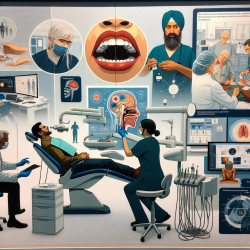Unlocking the Power of Spatial Analysis: Lessons from the Gaza Strip
As a practitioner in the field of special education and therapy, staying informed about global events and their implications is crucial. A recent study titled ‘Nowhere and no one is safe’: spatial analysis of damage to critical civilian infrastructure in the Gaza Strip during the first phase of the Israeli military campaign, 7 October to 22 November 2023 offers insights that can enhance our understanding and application of spatial analysis in educational settings.
Why Spatial Analysis Matters
Spatial analysis involves examining the geographical patterns of various phenomena. In the context of the Gaza Strip, this study applied spatial analysis to assess the damage to critical civilian infrastructure, including health, education, and water facilities. The findings revealed a high degree of damage clustering, suggesting potential violations of International Humanitarian Law (IHL).
Implementing Spatial Analysis in Education
While the study focuses on a conflict zone, the principles of spatial analysis can be applied in educational environments to improve resource allocation, identify areas needing intervention, and enhance overall service delivery. Here’s how you can leverage spatial analysis in your practice:
- Resource Allocation: Use spatial data to identify schools or districts with the highest needs, ensuring resources are directed where they are most required.
- Intervention Planning: Analyze patterns of student performance and behavior to tailor interventions that address specific geographical or demographic challenges.
- Emergency Preparedness: Map out safe zones and evacuation routes within school premises to enhance safety protocols.
Encouraging Further Research
This study underscores the importance of spatial analysis in understanding complex issues. As practitioners, we should be encouraged to delve deeper into how spatial data can inform our practices, particularly in special education and therapy. Consider collaborating with researchers or attending conferences that focus on the intersection of geography and education.
Conclusion
The insights gained from the Gaza Strip study highlight the transformative potential of spatial analysis. By integrating these techniques into our practice, we can improve educational outcomes and ensure a more equitable distribution of resources. To read the original research paper, please follow this link: ‘Nowhere and no one is safe’: spatial analysis of damage to critical civilian infrastructure in the Gaza Strip during the first phase of the Israeli military campaign, 7 October to 22 November 2023.










